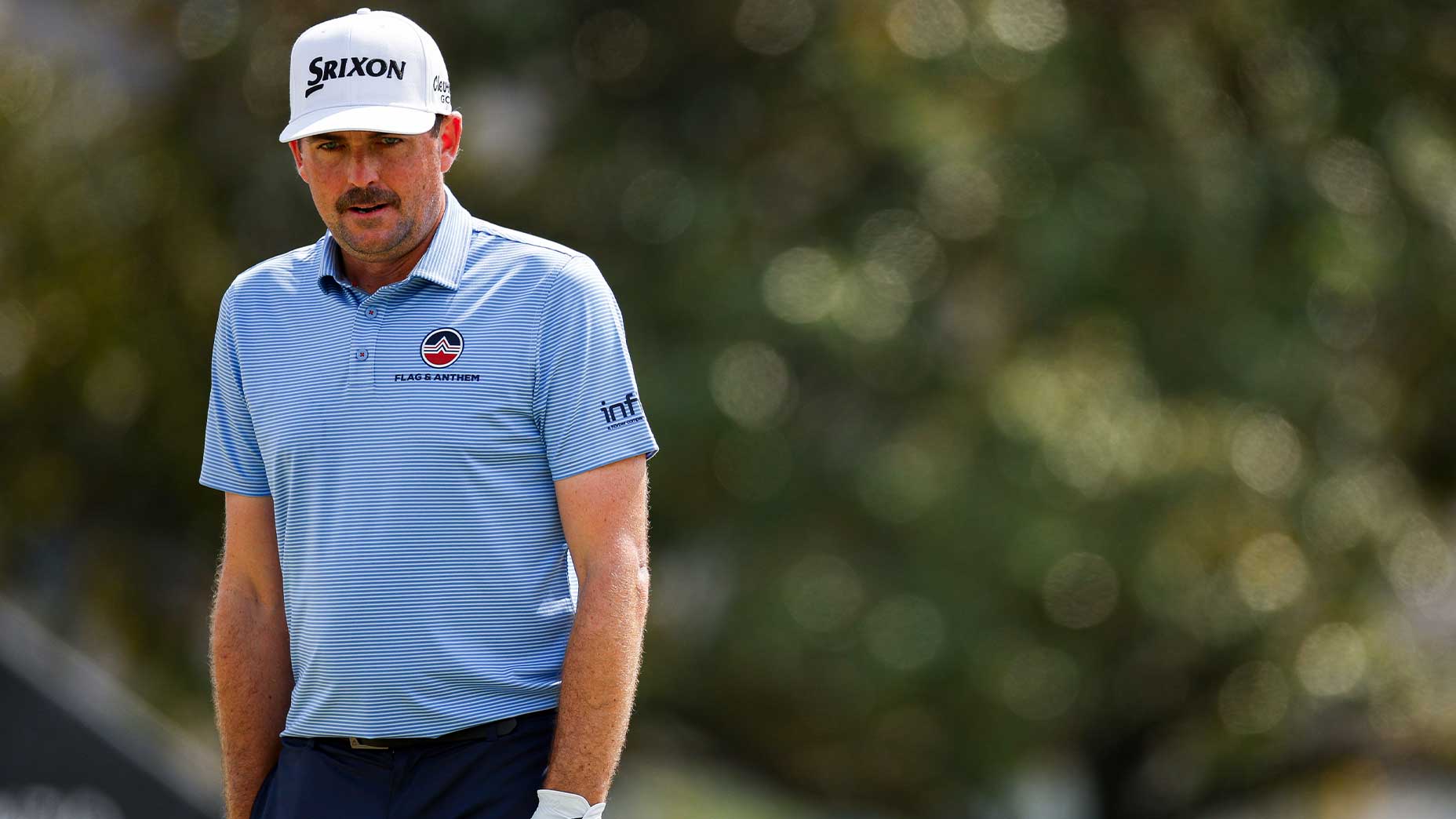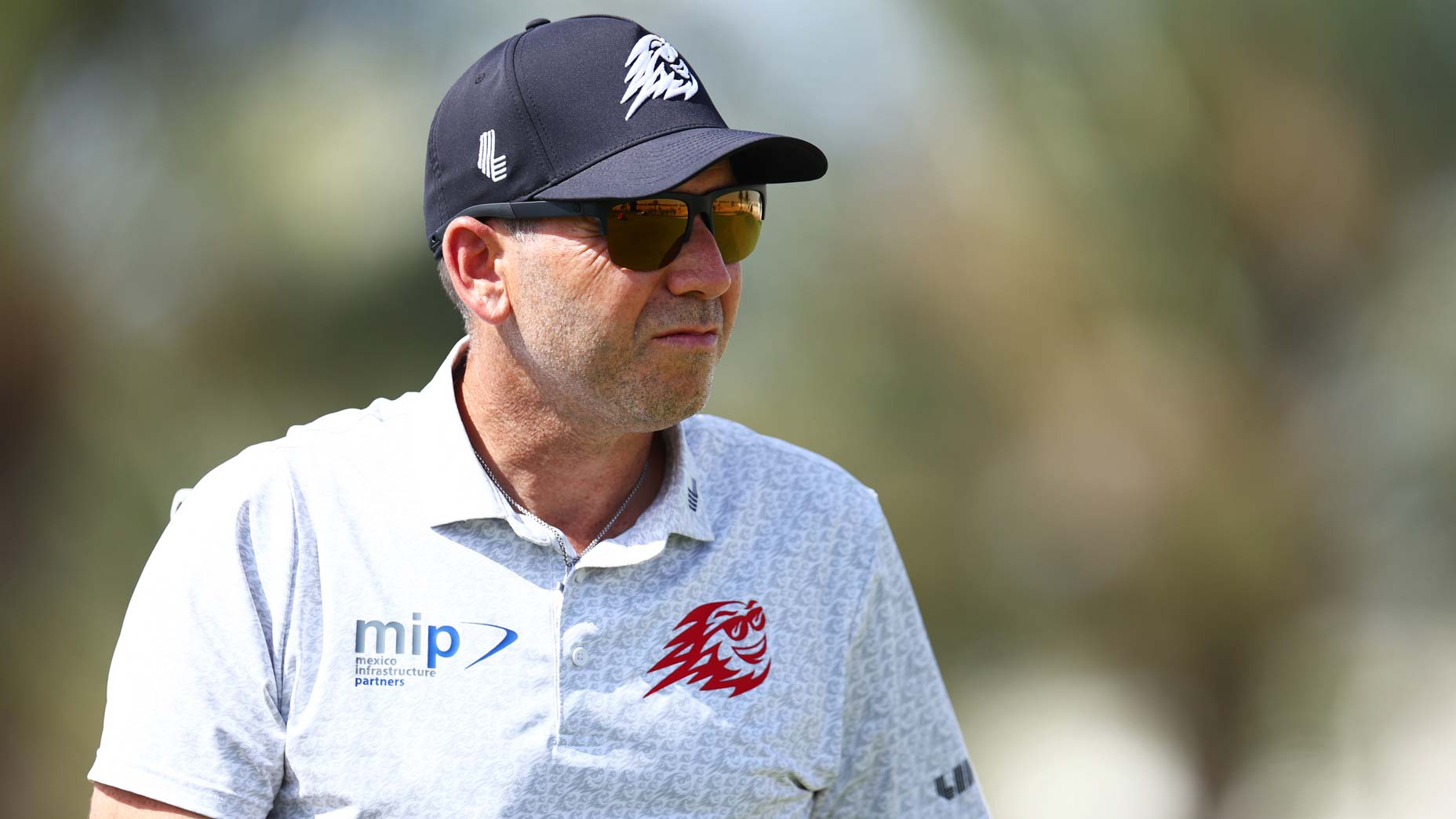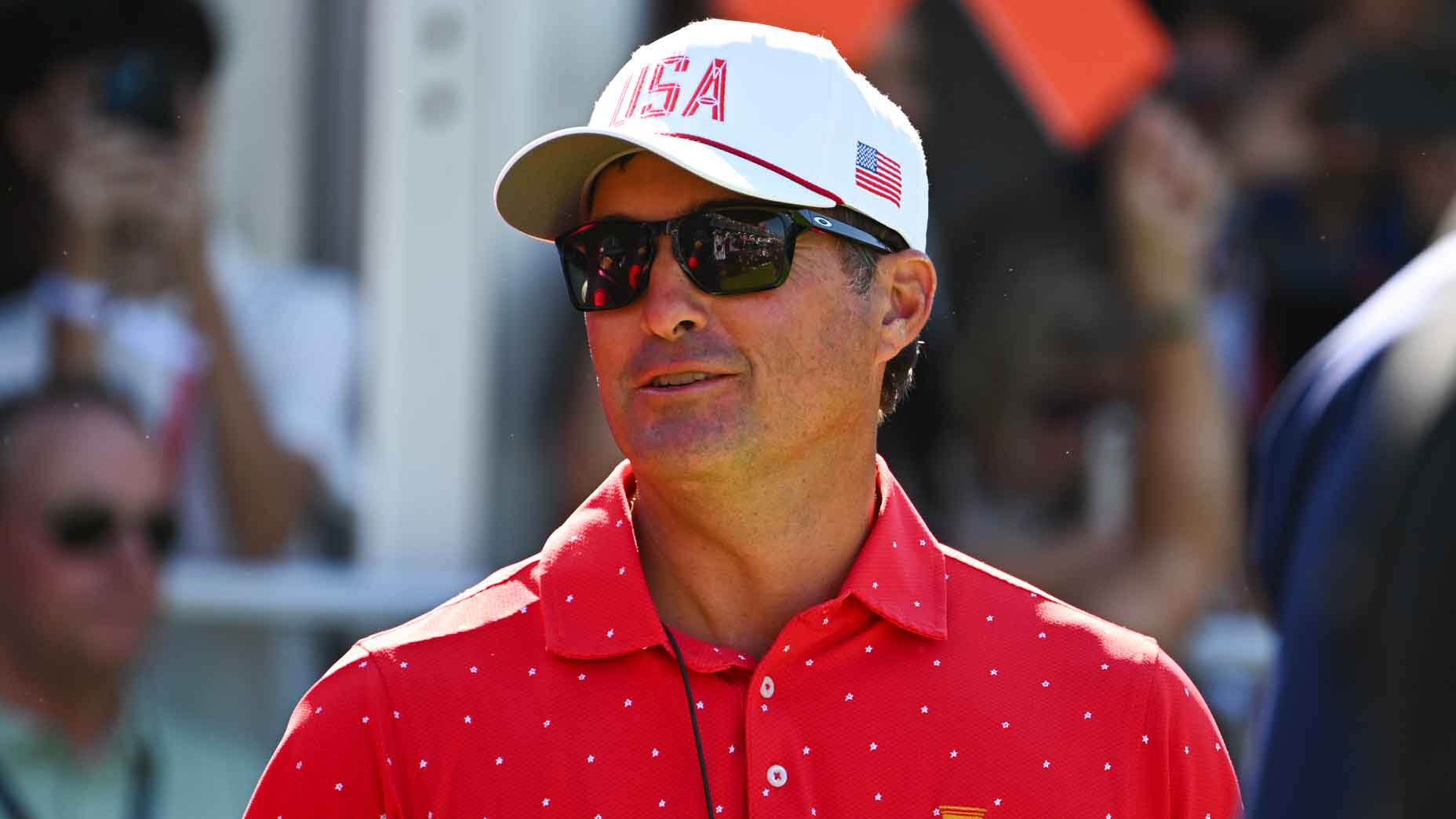Shocking Ryder Cup ticket prices remind us of 1 uncomfortable truth
- Share on Facebook
- Share on Twitter
- Share by Email

It will cost fans a pretty penny to witness the 1st tee at the Ryder Cup in 2025.
Getty Images
Anticipation is building for next year’s Ryder Cup, with the ever-passionate American considering his chances as a playing captain, and Ryder Cup Europe looking like it’ll have no issues building the team it wants. Last week’s Year-to-Go press conferences worked well on that front, helping the hype train chug along…
…until it hit a snag when ticket prices trickled out on social media Monday.
The screenshotted details from a tiny FAQ corner of the Official Ryder Cup website revealed a new inconvenient truth: that it will cost fans $750 a person to attend competition days next fall. Early week tickets will be discounted to $255 for the right to watch the teams hit practice shots in an uncompetitive setting. And Thursday tickets — which include the pomp of an opening ceremony and celebrity team golf, but no actual competition — will run $423.
You can think about it in any number of ways. How it’ll cost $2,250 for a father and two children to watch Rory McIlroy face off against the Americans. Or that attending the Sunday singles is now more expensive than attending the Champions League Final, the world’s biggest annual sporting event.
As for the $749.50 question — why? — there were several unsavory answers and one logical one: Economics. The PGA of America has landed on $750 per person as the equilibrium between supply and demand. Someone, somewhere, alongside Someone’s Buddies, will pay that price to hail Scottie Scheffler and boo Jon Rahm — therefore it’s the correct price. And hosted within the borders of the most capitalistic country on the planet, that might make a lot of sense. But the sports world has repeatedly shown us that market forces cut two ways. If there’s plenty of money to be made hosting an event, there’s plenty of money to pay out for it, too.
Think about just one year ago, the 18th green at Marco Simone, and that scuffle between McIlroy and caddie Joe LaCava. We forget now that the hottest controversy in recent pro golf history started as an apparent (and unspoken) plea for player compensation from Patrick Cantlay. Though Cantlay denied his hatless crusade had anything to do with compensation, it became clear during the lead up and come down from the event that disagreements exist about how the actors on stage are unpaid for putting on the show.
We learned that Netflix crews were barred from the American team room because not everyone in Rome was interested in offering their NIL to the production for free. We learned that Xander Schauffele’s father, Stefan, vocalized plenty of worthy questions about how the PGA of America uses the funds raised by hosting the Cup. We re-engaged in discourse about the PGA’s existence as a non-profit that allegedly runs on a break-even basis over a four-year hosting schedule. And we remembered how the PGA now donates $200,000 to charities of Ryder Cup players’ choosing (a modest note that started decades ago in response to complaints by a disgruntled Tiger Woods and David Duval). Do we expect the angst around player pay at the Ryder Cup to go away when event organizers have multiplied the cost of attendance by a factor of three?
Twenty-five years removed from those complaints by Woods and Duval, the only thing that has changed about the Cup is its waistline. Crowds are bigger than ever, the event is more relevant in the global golf calendar, its emotions are higher than ever and its TV rights are only gaining value. Hell, even future European venues are earmarked for purpose-built facilities, near global capitals, often at resorts willing to build courses geared for match play. (London is next, it would appear.) From 30,000 feet, the Ryder Cup starts to look a bit like Rollercoaster Tycoon, where the fun park grows and grows and grows, but the costs of maintenance grow with it. The 2023 Cup saw a revenue increase of 40 percent since the last Europe-based Cup, but a profits decrease of about 40 percent.
Ultimately, the PGA of America’s resistance to appearance fees resides in the event’s history and in the hearts of many pros (mostly European-born) who want to honor it. Some things, like representing one’s country or continent, are bigger than a paycheck. Some even swear they’d pay to play in the Cup, labeling it the only event they put their egos aside for. It’s a heart-warming sentiment in these money-obsessed times, but one unlikely to last.
Recall the responses from various male pros (Ryder Cuppers, too!) to the USGA’s purse increase at the U.S. Women’s Open. Great for the ladies! What about us? Recall the NIL ownership complaints that preceded the creation of LIV, the appearance fees baked into every made-for-television match, or the rising costs demanded of tournament sponsors. It has become common practice for players to look around, see dollar signs increasing, close by or elsewhere, and raise their hands with a simple question.
Wait, what about me???
The problem with Monday’s ticket reveal is not solely that the Ryder Cup now feels like another effort by golf’s stakeholders to punish the sport’s most impassioned supporters. The problem is that the price point also risks turning away a considerably more influential piece of the golf public: the players. What about us?! was always going to come around again from the locker rooms at the Ryder Cup. And now, $750 later, it seems less wrong to ask.
Latest In News

Sean Zak
Golf.com Editor
Sean Zak is a writer at GOLF Magazine and just published his first book, which follows his travels in Scotland during the most pivotal summer in the game’s history.









